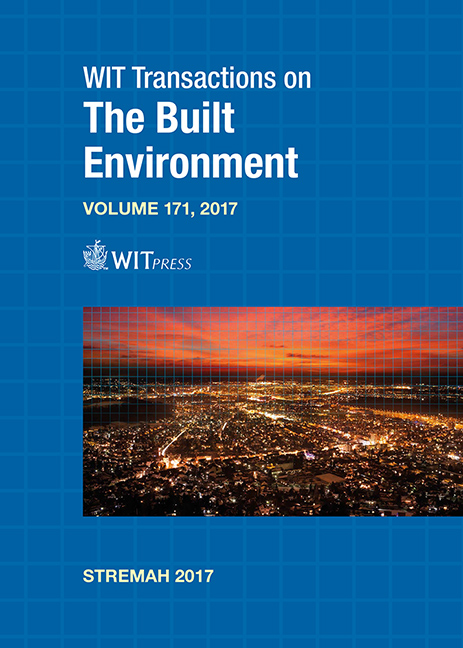NON-INVASIVE APPROACHES FOR LOW-ENERGY RETROFIT OF BUILDINGS: IMPLEMENTATION, MONITORING AND SIMULATION IN A LIVING LAB CASE STUDY
Price
Free (open access)
Transaction
Volume
171
Pages
11
Page Range
183 - 193
Published
2017
Paper DOI
10.2495/STR170161
Copyright
WIT Press
Author(s)
MONICA MATEO-GARCIA, ABDULLAHI AHMED, DANNY MCGOUGH
Abstract
There is urgent need for Europe to transform into a low-carbon economy to reduce the risk of climate change. The building sector is responsible for nearly 40% of the total energy consumption in Europe. In order to achieve substantial energy and greenhouse gas (GHG) emission reductions, low-energy retrofitting of existing buildings becomes a very important challenge/opportunity in both domestic and non-domestic buildings. A considerable number of existing buildings are either protected or contain hazardous materials limiting the potential for conventional retrofitting approaches for improving the existing façades. Retrofitting Solutions and Services for the enhancement of Energy Efficiency in Public Buildings (RESSEEPE) is an EU-funded research project that focuses on the refurbishment of existing public buildings in different European cities. A case study approach is used to implement and monitor the performance of a range of building fabric materials. The case study focuses on a demo building in Coventry University, located within the city centre of Coventry. The paper documents the materials selection and the low-carbon refurbishment, monitoring and simulation process followed. As asbestos was found in the building, it was necessary to ensure that the materials and technologies selected didn’t interfere with the existing elements of the façade. The materials finally installed were specifically selected to work as an addition of layers rather than substitution of elements. The living lab nature of the demo-site aims to set an example for low carbon refurbishment in protected or existing buildings with hazardous materials, with a non-invasive approach based on state-of-the-art materials and technologies.
Keywords
existing buildings, energy performance, non-destructive testing, building performance diagnostics, innovative materials, passive design




